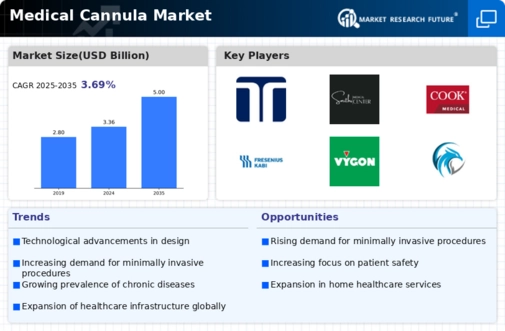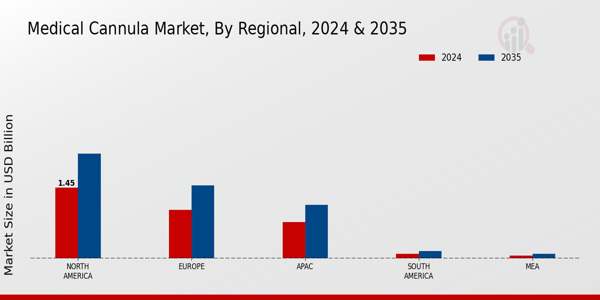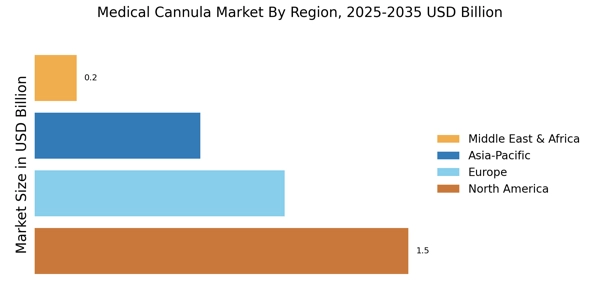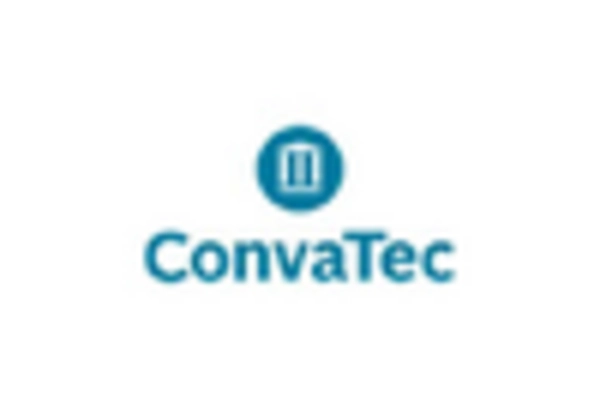Rising Prevalence of Chronic Diseases
The Medical Cannula Market is significantly influenced by the rising prevalence of chronic diseases such as diabetes, cardiovascular disorders, and respiratory conditions. As these diseases become more common, the demand for effective treatment options, including the use of cannulas for drug delivery and fluid management, is expected to rise. According to recent statistics, the number of patients requiring long-term care is projected to increase, thereby driving the need for reliable medical devices. This trend suggests that healthcare providers will increasingly rely on cannulas to administer medications and manage patient care, further propelling the market forward.
Regulatory Support and Standardization
The Medical Cannula Market is also influenced by regulatory support and standardization efforts aimed at ensuring the safety and efficacy of medical devices. Regulatory bodies are increasingly establishing guidelines that promote the use of high-quality materials and manufacturing processes for cannulas. This regulatory framework not only enhances patient safety but also fosters innovation within the industry. As manufacturers comply with these standards, they are likely to develop more advanced and reliable products, which could lead to increased market penetration. The emphasis on regulatory compliance is expected to drive growth in the cannula market, as healthcare providers seek to adopt devices that meet stringent safety criteria.
Increased Investment in Healthcare Infrastructure
The Medical Cannula Market is benefiting from increased investment in healthcare infrastructure across various regions. Governments and private entities are allocating substantial funds to enhance healthcare facilities, which includes upgrading medical equipment and technologies. This investment is particularly evident in emerging markets, where the demand for advanced medical devices is on the rise. As healthcare systems expand and modernize, the need for reliable and efficient cannulas becomes paramount. This trend indicates a positive outlook for the cannula market, as enhanced infrastructure will likely lead to higher adoption rates of these essential medical devices.
Technological Innovations in Medical Cannula Market
The Medical Cannula Market is experiencing a surge in technological innovations that enhance the efficacy and safety of cannula devices. Advancements in materials science have led to the development of cannulas that are not only more durable but also offer improved biocompatibility. For instance, the introduction of smart cannulas equipped with sensors allows for real-time monitoring of patient vitals, thereby increasing the precision of medical procedures. Furthermore, the integration of 3D printing technology is revolutionizing the customization of cannulas, enabling healthcare providers to tailor devices to individual patient needs. This trend is likely to drive market growth, as hospitals and clinics increasingly seek out cutting-edge solutions to improve patient outcomes.
Growing Preference for Minimally Invasive Techniques
The Medical Cannula Market is witnessing a growing preference for minimally invasive techniques among healthcare professionals and patients alike. These techniques are associated with reduced recovery times, lower risk of complications, and less postoperative pain. As a result, there is an increasing demand for cannulas that facilitate such procedures, including those used in laparoscopic surgeries and other interventions. Market data indicates that the minimally invasive surgery segment is expected to grow at a substantial rate, which in turn will likely boost the cannula market. This shift towards less invasive options is reshaping the landscape of medical procedures, making cannulas an essential component in modern healthcare.



















Leave a Comment